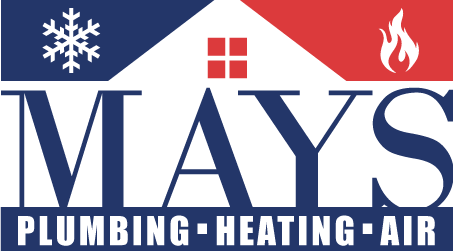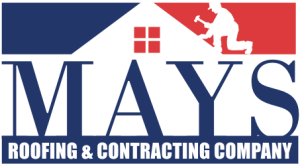What Are the Most Effective DIY Techniques for Roof Ice Damage Prevention?
Winter can be a beautiful season, but it often brings challenges, particularly for homeowners. One major issue during this time is ice damage on roofs. Understanding the techniques for prevention is crucial. Ice can lead to costly repairs and detrimental structural issues. Thus, employing effective DIY techniques for roof ice damage prevention is essential.
Understanding Ice Damage on Roofs
Before delving into prevention methods, it’s important to understand how ice forms damage. During winter, as heat escapes from a home, it warms the roof. When snow accumulates on the roof, the heat melts the snow, causing water to flow down. When this water reaches the colder eaves, it refreezes, forming **ice dams**. Ice dams can trap water on the roof, leading to leaks and water damage.
Key Signs of Ice Damage
Identifying the signs of ice damage early can help prevent extensive issues. Look for:
- Ice buildup along the eaves.
- Water stains on ceilings or walls.
- Damaged shingles or roofing material.
- Excessive icicles hanging from gutters.
Effective DIY Techniques for Prevention
The following techniques can significantly minimize the risk of ice damage on roofs. Implementing these strategies not only helps in preventing ice formation but can also enhance your roof’s overall durability.
1. Insulation Improvement
Improper insulation is one of the leading causes of heat loss. Proper insulation in the attic is key to ensuring that warm air does not escape into the roof space. This can lead to melting snow and ice dam formation. Use the following methods:
- Inspect existing insulation for gaps and voids.
- Add more insulation as necessary, ensuring it meets the R-value requirement suited for your climate.
- Seal any air leaks around ducts, vents, or lighting fixtures in the attic.
2. Ventilation Enhancement
A well-ventilated attic helps maintain the temperature balance between the attic and the outside environment. Effective ventilation prevents the warm air from accumulating at the roof level.
- Install soffit vents and ridge vents to ensure proper airflow.
- Consider gable vents for additional ventilation.
- Ensure no insulation blocks airflow from vents at the eaves.
3. Roof Coating
Applying a reflective roof coating can effectively manage heat retention and reduce ice formation. This is particularly beneficial in sunny locations.
- Choose a high-quality, reflective coating suitable for your roofing type.
- Follow the manufacturer’s guidelines for application to ensure effectiveness.
4. Ice and Water Shield Installation
Installing an ice and water shield along the eaves can prevent water intrusion. This material is a self-adhering membrane that acts as a barrier against ice dam leakage.
- Install it at least six feet up from the edge of the roof.
- Ensure proper overlapping of seams when applying.
5. Gutter Maintenance
Clean gutters regularly to remove debris that can block water flow. Clogged gutters can cause water to back up and freeze, leading to ice dam formation.
- Remove leaves and twigs periodically, especially before winter.
- Consider installing gutter guards to prevent debris accumulation.
6. Heat Cables Installation
Heat cables can be installed along the roof’s edge and in gutters to melt snow and ice as it forms. This technique is particularly effective in preventing the formation of ice dams.
- Follow manufacturer instructions for placement and power requirements.
- Ensure the cables are secured appropriately to avoid movement due to wind or snow.
7. Snow Removal
Manually removing snow from the roof after a snowfall can significantly reduce the likelihood of ice formation. Use the following precautions:
- Utilize a roof rake to remove snow safely from the ground.
- Be cautious of falling snow and ice while removing debris.
Long-Term Roof Maintenance Practices
Adopting ongoing roofing maintenance routines can also play a significant role in ice damage prevention. These practices can ensure your roof remains in optimal condition during the colder months.
1. Regular Inspections
Conduct routine roof inspections to identify damage. Inspect at least twice a year, particularly before and after winter. Look for:
- Cracks, missing shingles, or worn areas.
- Issues in flashing around chimneys or vents.
2. Cleaning and Landscaping
Keeping trees and other vegetation at a distance can prevent branches from breaking and potentially damaging the roof. Also, trimming back any branches that hang close can reduce debris accumulation on the roof.
3. Professional Consultation
For roofs over fifteen years old or showing significant damage, consulting a roofing professional may be necessary. They can provide insights on whether repairs or replacement are required.
When to Seek Professional Help
While many techniques can be conducted as DIY projects, the complexity and potential danger of roofing tasks mean that sometimes professional help is warranted. This is particularly true in scenarios like:
- Severe ice damage already causing leaks.
- Roofs that are high or steep.
- Lack of comfort in handling tools or performing the tasks safely.
Conclusion
In summary, prevention of ice damage on roofs hinges on proper insulation, ventilation, and ongoing maintenance. By implementing the DIY techniques discussed, homeowners can significantly reduce the risk of ice dams leading to costly repairs. Being proactive not only saves money but also prolongs the lifespan of your roofing system. Remember, when in doubt, contacting a professional is the best approach to ensure the integrity of your roof during the icy months.
Author: STAFF HERE HILTON HEAD
The HILTON HEAD STAFF WRITER represents the experienced team at HEREHiltonHead.com, your go-to source for actionable local news and information in Hilton Head Island, Beaufort County, and beyond. Specializing in "news you can use," we cover essential topics like product reviews for personal and business needs, local business directories, politics, real estate trends, neighborhood insights, and state news affecting the area—with deep expertise drawn from years of dedicated reporting and strong community input, including local press releases and business updates. We deliver top reporting on high-value events such as the RBC Heritage golf tournament, Hilton Head Island Wine & Food Festival, and the Gullah Celebration. Our coverage extends to key organizations like the Hilton Head Island-Bluffton Chamber of Commerce and Community Foundation of the Lowcountry, plus leading businesses in tourism and hospitality that power the local economy such as Sea Pines Resort and Sonesta Resort Hilton Head Island. As part of the broader HERE network, including HEREAiken.com, HEREBeaufort.com, HEREChapin.com, HERECharleston.com, HEREClinton.com, HEREColumbia.com, HEREGeorgetown.com, HEREGreenwood.com, HEREGreenville.com, HEREHiltonHead.com, HEREIrmo.com, HEREMyrtleBeach.com, HERENewberry.com, HERERockHill.com, and HERESpartanburg.com, we provide comprehensive, credible insights into South Carolina's dynamic landscape.




 Mays Contracting
Mays Contracting

